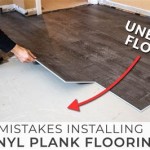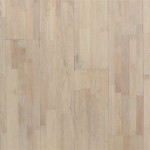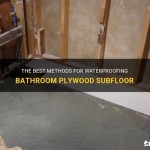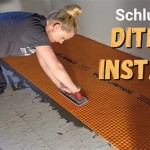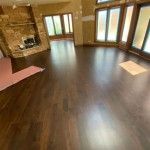Troubleshooting Your Laminate Flooring: A Comprehensive Guide
Laminate flooring has gained immense popularity due to its durability, affordability, and aesthetic appeal. However, like any other flooring material, it can occasionally encounter issues that require troubleshooting. This comprehensive guide will delve into common problems associated with laminate flooring and provide practical solutions to resolve them effectively.
1. Squeaking or Creaking Noises
Squeaky or creaking noises beneath laminate flooring can be caused by several factors. Inadequate subfloor preparation, improper installation, or loose flooring planks are common culprits. To mitigate these issues, ensure a level and sturdy subfloor, use a vapor barrier to prevent moisture damage, and tighten any loose planks by tapping them gently with a hammer.
2. Buckling or Cupping
Buckling or cupping occurs when laminate planks expand due to moisture penetration. This can result from spills, leaks, or high humidity. To address this problem, identify the source of moisture and rectify it promptly. Allow the flooring to dry thoroughly and install a dehumidifier to reduce moisture levels.
3. Gaps Between Planks
Gaps between laminate planks can be caused by improper installation, temperature fluctuations, or moisture issues. Ensure that the planks are properly interlocked during installation. If gaps persist, you may need to add expansion spacers around the perimeter of the room or use a gap-filling compound specifically designed for laminate flooring.
4. Scratches or Dents
Laminate flooring is generally scratch-resistant, but heavy furniture or sharp objects can cause damage. To prevent scratches, use felt pads under furniture legs and avoid dragging heavy items across the floor. If scratches occur, you can try using a laminate floor repair kit or a colored wax pencil to conceal them.
5. Fading or Discoloration
Fading or discoloration can occur due to prolonged exposure to sunlight or chemical spills. To protect your laminate flooring, use curtains or blinds to filter UV rays and clean up spills immediately using a gentle cleaner. Avoid using abrasive cleaning agents as they can damage the finish.
6. Water Damage
Although laminate flooring is moisture-resistant, prolonged exposure to water can still cause damage. If water has seeped into the planks, it is crucial to remove it immediately and dry the area thoroughly. Use a fan or dehumidifier to accelerate the drying process. In severe cases, you may need to replace the affected planks.
7. Mold and Mildew
Mold and mildew can thrive in damp environments, which can occur underneath laminate flooring due to moisture penetration. To prevent this, ensure adequate ventilation and moisture control measures. If mold or mildew has already developed, clean the affected area thoroughly with a mold-killing solution and dry it completely.
Conclusion
Troubleshooting laminate flooring requires a systematic approach and a keen eye for detail. By identifying the underlying cause of any issues and implementing the appropriate solutions, you can effectively maintain the beauty and functionality of your laminate flooring for years to come. If the problem persists or requires specialized expertise, do not hesitate to consult a professional flooring contractor for assistance.

Laminate Flooring Issues Howtospecialist How To Build Step By Diy Plans

8 Ways To Fix A Floor Tried And True Solutions The Most Common Flooring Issues Bob Vila

Step By Guide On How To Fix A Laminate Floor That Got Wet

How To Repair Laminate Flooring The Home

How To Prevent Repair Water Damage Laminate Flooring Claude Browns

How To Repair Laminate Flooring

Laminate Flooring Issues Howtospecialist How To Build Step By Diy Plans

Common Mistakes When Laying Laminate Flooring Next Day Floors

Solid Engineered Wood Floor Troubleshooting Part 2 Finfloor

Solid Engineered Wood Floor Troubleshooting Part 3 Finfloor
See Also
